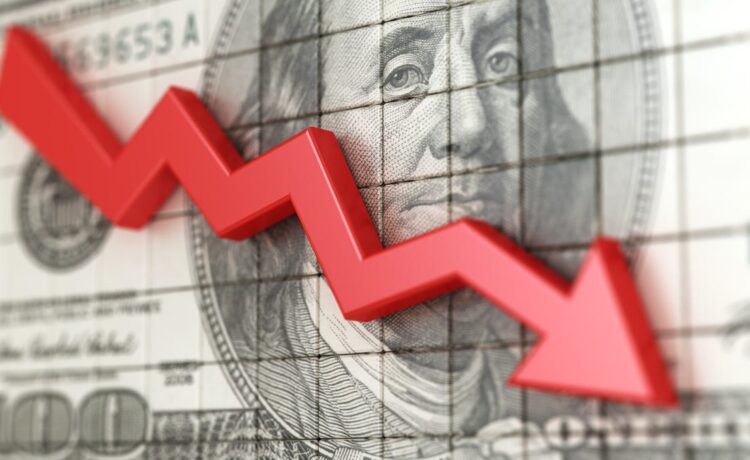
How to create a will, set legacy contacts on your device
These four tips can help you and your loved ones sort through the digital assets after someone dies.
Problem Solved
Historically, the February after an election year has been the worst month for the U.S. stock market, according to Carson Group. Indeed, the S&P 500 (SNPINDEX: ^GSPC) declined 1.4% last month as disappointing economic data and concerns about potential tariffs weighed on the stock market.
Is the February dip a buying opportunity? Or is the stock market too risky right now? Here’s what investors should know.
The stock market usually rises from March through August
The S&P 500 in the last decade has typically generated a positive return in March, and that momentum has generally carried the index higher through August. The chart below shows the S&P 500’s average return in each month over the last decade.
As shown above, March has historically been a good time to enter the stock market. Spring often brings a wave of optimism that builds into solid returns through the summer. Add to that the average bull market has lasted for five-and-a-half years, more than twice as long as the current bull market, and the present situation seems like a buying opportunity. But history says tariffs could throw a wrench in the gears.
The economy is on shaky ground
Consumer spending in January unexpectedly dropped 0.2% compared to December. That was the first month-on-month decline in two years and the largest decline since the early days of the pandemic about five years ago. Also, consumer sentiment fell in February to its lowest level in over a year amid concerns about the recent resurgence in inflation.
That data matters because consumer spending accounts for about two-thirds of gross domestic product (GDP). Put differently, consumer spending is the primary engine that drives the economy. GDP growth in the fourth quarter of 2024 slowed markedly, and the latest data concerning consumer spending and sentiment hints at a continued deceleration in the first quarter of 2025.
In fact, data from the Federal Reserve Bank of Atlanta suggests first-quarter GDP is on pace to drop at an annual rate of 2.8%. That would be the sharpest decline since the second quarter of 2020, and weak consumer spending is one of the driving forces behind that early estimate. However, the record trade deficit in January (meaning imports vastly exceeded exports) also contributed.
President Donald Trump recently imposed a 10% tariff on China. He plans to double down in March with an additional 10% tariff on China, and a 25% tariff on Canada and Mexico. Trump has also mentioned a 25% tariff on the European Union. Manufacturers have scrambled to reduce the impact by stockpiling inventory, but that is a short-term solution.
Tariffs will eventually be a headwind to corporate earnings because businesses have only two options: They can either absorb the cost increases, which would lower profit margins. Or they can pass the cost increases along to buyers, which would likely reduce sales. In either scenario, earnings would suffer, and that could certainly cause the stock market to decline.
Higher tariffs might cause a stock market decline
President Trump in his first term imposed several tariffs in 2018 and 2019 that ultimately raised the average tariff rate on all U.S. imports to 2.7%, according to the Tax Foundation. As investors processed those tariffs, the S&P 500 declined 19.8% during a three-month period between September and December in 2018.
Importantly, President Trump has outlined a more aggressive tax on imports this time. If all proposed tariffs are implemented, the Tax Foundation estimates the average tariff rate on all U.S. imports will reach 13.8%, the highest level since 1939. If pushing the average rate to nearly 3% caused a 19.8% drawdown in 2018, then pushing the average rate to nearly 14% could cause a much worse decline in 2025.
Here is the bottom line: March has traditionally been a springboard leading to strong stock market returns in the summer months. Additionally, the current bull market started less than two-and-a-half years ago, meaning it has lasted less than half as long as the average bull market.
But questions about President Trump’s trade policies have added a great deal of volatility and uncertainty to the stock market in recent weeks. That does not mean investors should avoid stocks, but they should limit purchases to their best ideas. More importantly, now is a good time to build a cash position to capitalize on the next drawdown.
I say that because the S&P 500 recovered quickly from the market correction that began in late 2018. In fact, the index had recouped its losses and reached a new high by May 2019. A similar pattern could play out this time around, so investors should be ready to buy on the dip.
Trevor Jennewine has no position in any of the stocks mentioned. The Motley Fool has no position in any of the stocks mentioned. The Motley Fool has a disclosure policy.
The Motley Fool is a USA TODAY content partner offering financial news, analysis and commentary designed to help people take control of their financial lives. Its content is produced independently of USA TODAY.
Should you invest $1,000 in S&P 500 Index right now?
Offer from the Motley Fool: Before you buy stock in S&P 500 Index, consider this:
The Motley Fool Stock Advisor analyst team just identified what they believe are the 10 best stocks for investors to buy now… and S&P 500 Index wasn’t one of them. The 10 stocks that made the cut could produce monster returns in the coming years.
Consider when Nvidia made this list on April 15, 2005… if you invested $1,000 at the time of our recommendation, you’d have $699,020!*
Stock Advisor provides investors with an easy-to-follow blueprint for success, including guidance on building a portfolio, regular updates from analysts, and two new stock picks each month. TheStock Advisorservice has more than quadrupled the return of S&P 500 since 2002*. Don’t miss out on the latest top 10 list, available when you joinStock Advisor.
















